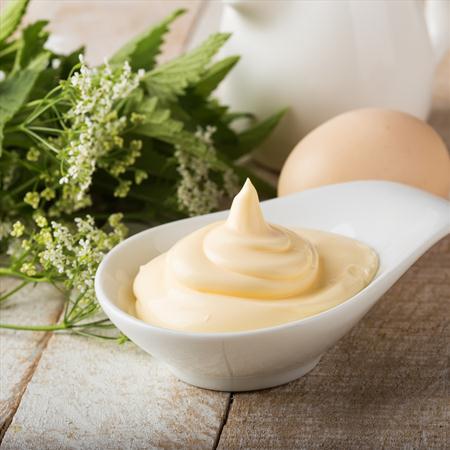Mayo
 |
When making mayonnaise from scratch for special recipes, use only the best olive oil. The taste difference is astounding. |
While there is argument about its exact origins, there is no doubt about its flavorful addition to a wide range of foods.
Many cooks choose to make mayonnaise from scratch. It is a simple process that typically combines egg yolks and vinegar. Often, mustard and olive oil or lemon juice are added. The process must be precise for the ingredients to emulsify, whether in a blender or whipped by hand.
Varieties
True mayonnaise contains approximately 70% - 80% fat, which may be a drawback for some diets. Flavored versions are gaining popularity.
Reduced fat or fat-free versions and salad dressings are a healthful alternative. These are not classified as the “real thing,” as they do not contain egg yolks.
Buying Tips
Always check the “use by” date. However, the shelf life can usually extend beyond that. Depending on use, you’ll have choices among glass, plastic, and squeeze containers.
Storage Tips
• Always refrigerate opened jars. They should remain stable for about six months.
• Commercial mayonnaise can indeed remain at room temperature for some time without danger of bacterial growth, but it may lose flavor.
• Freezer or extremely cold temperatures will cause separation and an unpleasant change in texture.
• Homemade mayonnaise will last four days, at most, in the refrigerator.
Usage Tips
Aside from the standard dips and other mixes, mayonnaise can be dressed up with the addition of herbs and spices such as:
• basil
• cumin
• tarragon
• chili powder.
Other ingredients can include chopped anchovies, chipotle, or pureed asparagus.
Substitution Tips
Use one of the following as a replacement for one cup of mayonnaise:
• 1 cup cottage cheese (after pureeing)
• 1 cup sour cream
• 1/2 cup yogurt and ½





